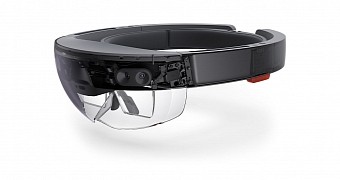It seems that Microsoft might be ready to delay the launch of a consumer version of the HoloLens augmented reality device for a long time to eliminate all potential problems associated with it, mainly because it does not want to see a repeat of the failure of the Kinect motion tracking system.
Alex Kipman, who leads the division in charge of the new hardware, is quoted by Polygon as explaining that the problems associated with the tech and its limited adoption by both developers and gamers were not a pleasant experience for the company.
Kinect was designed to allow the Microsoft home console to track the movement of the player and to convert that into useful inputs for both titles and the user interface, and the platform received a cautious but positive welcome from the user community.
The problems appeared when the company insisted on making it a part of the core launch package for the Xbox One, which pushed up the price of the new home console and failed to introduce any sort of major new features.
Since then, Microsoft has reversed that decision, and right now, there are almost no video games that launch with support for Kinect, and the tech seems to be dead when it comes to long-term development.
At the moment, a 3,000 dollars (2,600 Euro) version of the HoloLens is offered to developers and businesses, and Kipman says that the Redmond-based giant is now working to lower the price right now.
He adds, "When I feel the world is ready, then we will allow normal people to buy it. It could be as soon as we say 'yes,' and it could be as long as a 'very long time."
The HoloLens delivers an augmented reality experience, which means that it overlays a range of content on what the user is seeing and does not take over their entire vision, as the rival virtual reality solutions that are now getting ready for launch.
The new tech might be targeted mostly towards business interests
Microsoft demoed the new technology using Minecraft, and plenty of gamers were impressed by what it has to offer, but since then, the company has said that it might initially focus on creating functionality that appeals more to non-gamers.
The first virtual reality device to arrive is the Oculus Rift, which will begin shipping in March and will cost gamers more than 600 dollars or Euro, with a waiting list for those who are aiming to pick one up.
The rival Vive from Valve and HTC is priced at 799 dollars or Euro for a package, which comes complete with the headset and with two controllers, and gamers will be able to get one in April.
Sony is also working on PlayStation VR for the PlayStation 4, but the company is not ready to talk about the price tag of the device or about when it might be offered for virtual reality fans.
Other companies are also working in the field of VR, which might be doomed by high prices and by limited software support even before the hardware launches.

 14 DAY TRIAL //
14 DAY TRIAL //